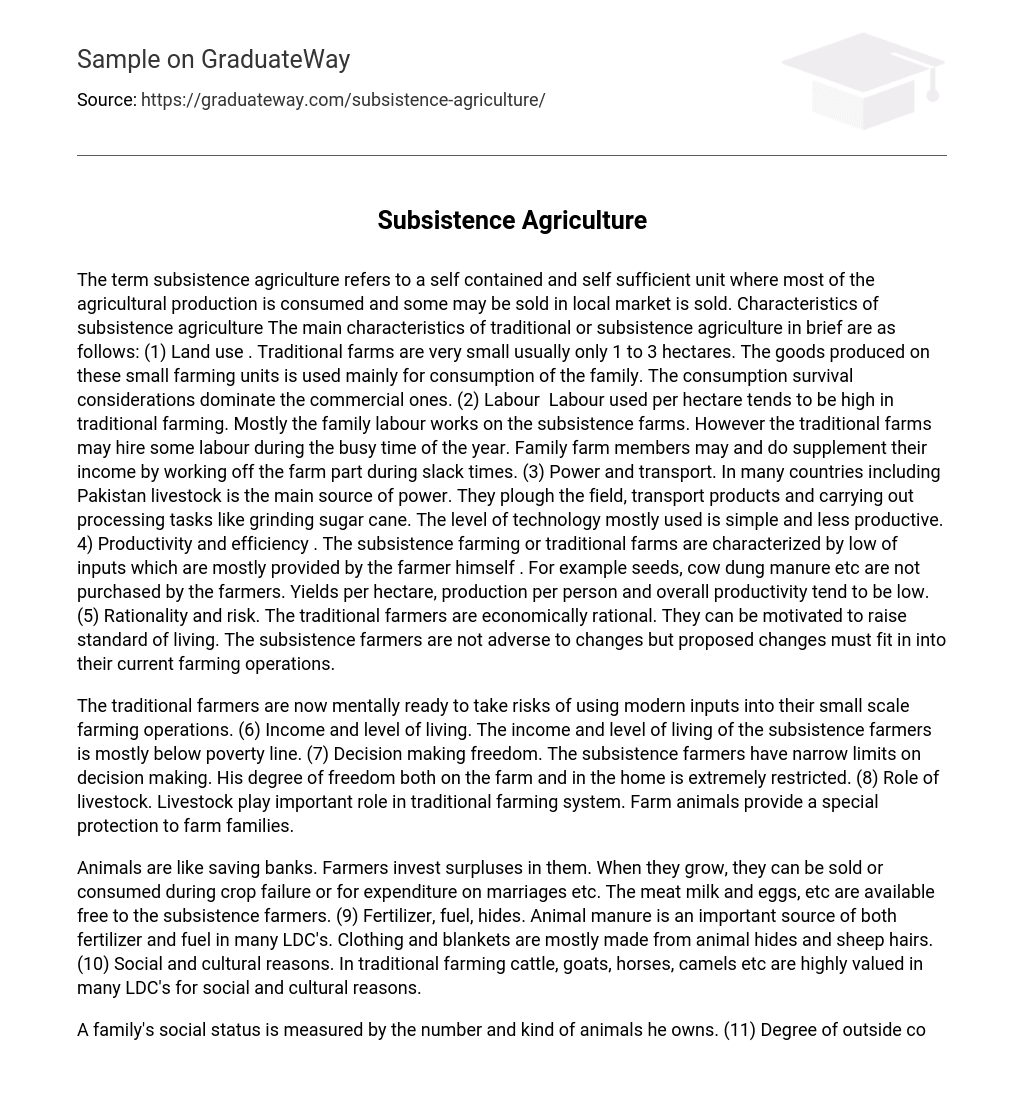The term subsistence agriculture refers to a self contained and self sufficient unit where most of the agricultural production is consumed and some may be sold in local market is sold. Characteristics of subsistence agriculture The main characteristics of traditional or subsistence agriculture in brief are as follows: (1) Land use . Traditional farms are very small usually only 1 to 3 hectares. The goods produced on these small farming units is used mainly for consumption of the family. The consumption survival considerations dominate the commercial ones. (2) Labour Labour used per hectare tends to be high in traditional farming. Mostly the family labour works on the subsistence farms. However the traditional farms may hire some labour during the busy time of the year. Family farm members may and do supplement their income by working off the farm part during slack times. (3) Power and transport. In many countries including Pakistan livestock is the main source of power. They plough the field, transport products and carrying out processing tasks like grinding sugar cane. The level of technology mostly used is simple and less productive. 4) Productivity and efficiency . The subsistence farming or traditional farms are characterized by low of inputs which are mostly provided by the farmer himself . For example seeds, cow dung manure etc are not purchased by the farmers. Yields per hectare, production per person and overall productivity tend to be low. (5) Rationality and risk. The traditional farmers are economically rational. They can be motivated to raise standard of living. The subsistence farmers are not adverse to changes but proposed changes must fit in into their current farming operations.
The traditional farmers are now mentally ready to take risks of using modern inputs into their small scale farming operations. (6) Income and level of living. The income and level of living of the subsistence farmers is mostly below poverty line. (7) Decision making freedom. The subsistence farmers have narrow limits on decision making. His degree of freedom both on the farm and in the home is extremely restricted. (8) Role of livestock. Livestock play important role in traditional farming system. Farm animals provide a special protection to farm families.
Animals are like saving banks. Farmers invest surpluses in them. When they grow, they can be sold or consumed during crop failure or for expenditure on marriages etc. The meat milk and eggs, etc are available free to the subsistence farmers. (9) Fertilizer, fuel, hides. Animal manure is an important source of both fertilizer and fuel in many LDC’s. Clothing and blankets are mostly made from animal hides and sheep hairs. (10) Social and cultural reasons. In traditional farming cattle, goats, horses, camels etc are highly valued in many LDC’s for social and cultural reasons.
A family’s social status is measured by the number and kind of animals he owns. (11) Degree of outside contract. The subsistence farmers have fewer contracts with the persons living in adjacent villages. (12) Huge wastages of resources. In subsistence farming there is much wastage of resources and production due to the use of unscientific method of production lack of transport shortage of storage facilities. (13) Element of uncertainty. In subsistence farming the element of uncertainty is very high. The failure of one or more than one major crop ruins the farmer.





